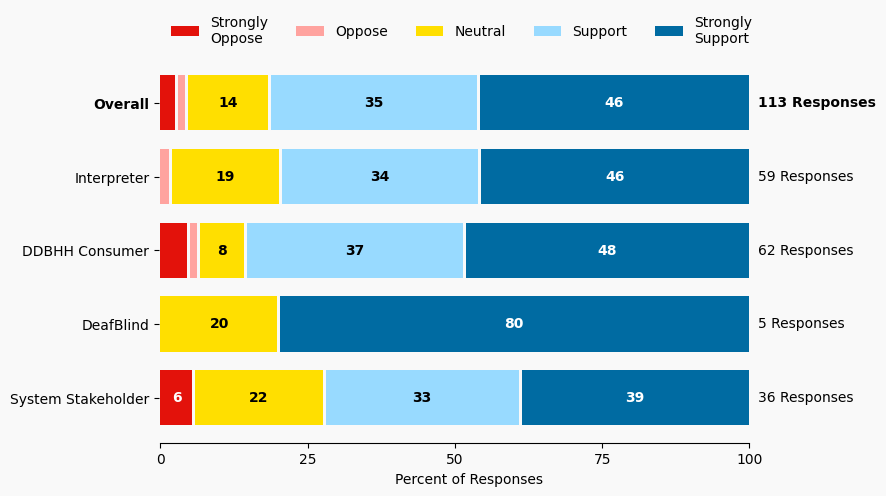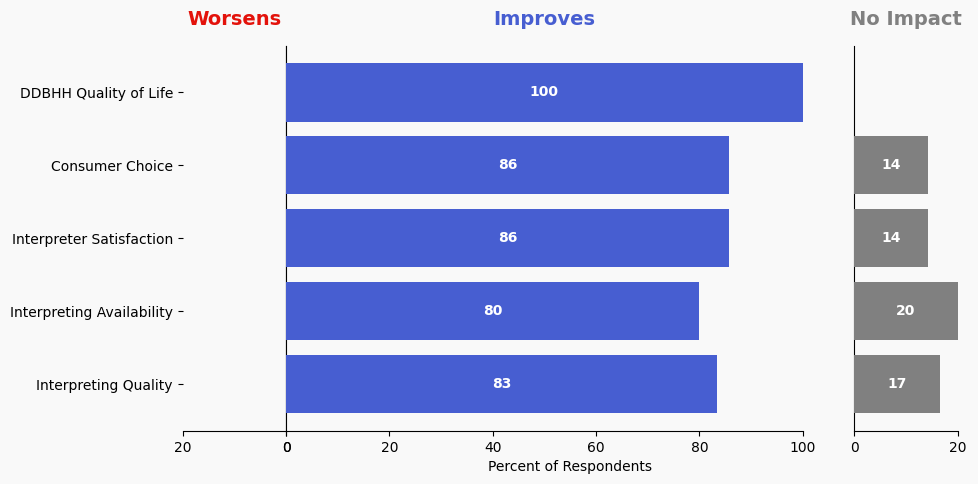53 Pursue Legislation for DeafBlind Students in K12 Education
Issue: DeafBlind youth, parents, education systems
Proposed Solution: Department of Education (Minnesota DeafBlind Project), the Commission, Metro Deaf School, Minnesota Academies for the Deaf and Blind, and DeafBlind partner organizations advocate for ficial support and legislation for a curriculum and implementation of a DeafBlind institute model for DeafBlind students to experience the range of communication options and philosophies.
Expected outcome: DeafBlind youth exposed to more communication options and philosophies from an earlier age; thus, DeafBlind youth would become more autonomous and thrive earlier by knowing their options and finding what is most successful. Especially as sight and hearing may change throughout a person’s lifetime, already having exposure to these options will prepare DeafBlind individuals for potential future communication methods.
Who is impacted: DeafBlind youth
Timeline: 6 months

Summary of Support Image Description
The stacked bar charts show how respondents rated their level of support and the total number of responses. The percentage for the five support levels is shown from left to right: Strongly Oppose (Dark Red), Oppose (Light Red), Neutral (Yellow), Support (Light Blue), and Strongly Support (Dark Blue).
Respondents may identify with multiple subgroups. The overall level of support is:
Overall
Strongly Oppose: 3%
Oppose: 2%
Neutral: 14%
Support: 35%
Strongly Support: 46%
Click to see the detailed image description for each subgroup.
Interpreter
Strongly Oppose: 0%
Oppose: 2%
Neutral: 19%
Support: 34%
Strongly Support: 46%
DeafBlind
Strongly Oppose: 0%
Oppose: 0%
Neutral: 20%
Support: 0%
Strongly Support: 80%
DDBHH Consumer
Strongly Oppose: 5%
Oppose: 2%
Neutral: 8%
Support: 37%
Strongly Support: 48%
System Stakeholder
Strongly Oppose: 6%
Oppose: 0%
Neutral: 22%
Support: 33%
Strongly Support: 39%
Overview of Respondents Opting for In-Depth Solution Analysis
After indicating their support level, 4% of the 113 respondents opted in to further assess whether the solution would worsen or improve on five metrics. Of the opt-in reviewers (5 respondents), 80% supported the solution, 20% were neutral on the solution, and 0% opposed the solution.
The remaining 108 respondents did not opt in to further assess the solution. Of these people, 81% support the solution, 13% were neutral on the solution, and 4% opposed the solution.
Reviewer Evaluation of Solution Effectiveness

Solution Effectiveness Image Description
The stacked bar charts show how respondents assessed the effectiveness of this solution based on five metrics. For each metric, the percentage of respondents is shown from left to right: Worsens (Red), Improves (Blue), No Impact (Gray).
DDBHH Quality of Life
Makes It Worse 0%
Makes It Better 100%
No Impact 0%
Interpreter Satisfaction
Makes It Worse 0%
Makes It Better 85%
No Impact 14%
Consumer Choice
Makes It Worse 0%
Makes It Better 85%
No Impact 14%
Interpreting Availability
Makes It Worse 0%
Makes It Better 80%
No Impact 20%
Interpreting Quality
Makes It Worse 0%
Makes It Better 83%
No Impact 16%
Reviewer Feedback and Insights
Interpreter
Comments from Interpreters suggest providing “In-Services” to support this legislation and ensure that educational interpreters are adequately trained.
Deaf, DeafBlind, Hard of Hearing
Comments from DDBHH Consumers emphasize the need for including DeafBlind students in both Deaf and mainstream schools, advocating for educational interpreters to be trained in ProTactile modalities. Comments also highlight the importance of ensuring the legislation addresses the unique needs of DeafBlind students.
System Stakeholder
No comments were submitted.
PREVIOUS SOLUTION
52 Establish Minnesota-based ProTactile House for DeafBlind
Issue: Many DeafBlind individuals do not always have exposure to ProTactile. Often interpreters have greater access to training than DeafBlind. While there is ProTactile Training offered at a ProTactile House in the Seattle area, it is expensive to travel and study there.
NEXT SOLUTION
54 Educate DeafBlind Youth in ProTactile
Issue: DeafBlind youth will benefit from accessing ProTactile but the information is not currently being shared with students and families
Leave a Reply